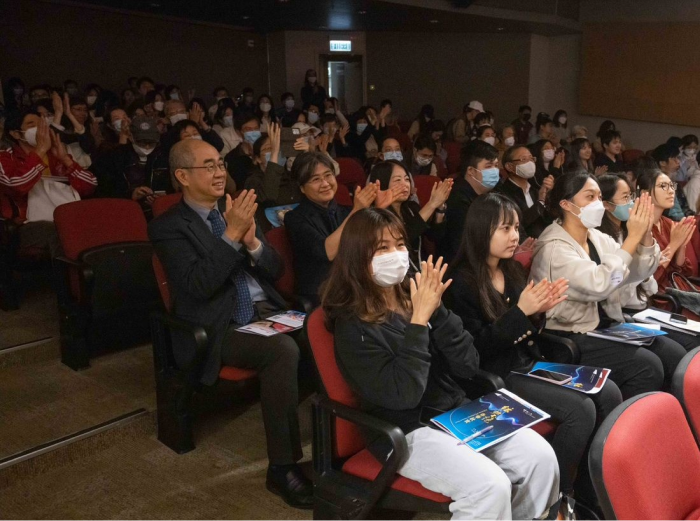In the Joseph LEE Hall, the members of the Windpipe Chinese Music Ensemble (the Ensemble) and invited performing artists tuned their instruments as they prepared for the upcoming "A Showcase of Everlasting Cantonese Music" concert.
An audience of over 300 entered the venue slowly with excitement. The programme was kicked off with a welcome speech by Prof. Raymond CHAN, Acting Vice-President (Student Affairs) of City University of Hong Kong (CityU). On behalf of CityU, he thanked the Ensemble for bringing the works curated by Ms. TUNG Tsz-ching to the CityU campus. The pieces are based on Hong Kong's first Cantonese music publication, The Essentials of Strings and Vocal Music (1916), compiled by YAU Hok-chou (1880-1941). This was used as the blueprint. Then it was arranged for an early-performing format, and expertise was gathered in the field for rehearsing to emulate the achievements and early appearance of traditional Cantonese music in terms of performance combination, repertoire and style.
Representing the Ensemble, Prof. Christopher PAK (left) receives a souvenir from Prof. Raymond CHAN (right).
Members of the Ensemble play traditional Chinese instruments.
After Prof. Christopher PAK, Director of the Music Department of the Hong Kong Academy for Performing Arts, introduced the curating concept, background and arrangement of the concert, the orchestra played the melodious "Phoenix Terrace", followed by "Dragon’s Roar on the Autumn River” with the gaohu, qinhu, yangqin, and qinqin, all unique traditional Chinese instruments, which reproduced the charm of the reissued record in the 1920s, with a mellow and beautiful tone.
In the middle of the program, the invited performing artists, TO Wing, George CHIU and Rico KAN, went on the stage to share with the audience how to interpret Cantonese music with Western instruments. CHIU and KAN demonstrated the characteristics of the "si-la guitar" (Hawaiian steel guitar) and "sik-si" (saxophone) and demonstrated various performance skills.
Rico KAN demonstrates the saxophone to interpret Cantonese music.
The three guest artists: Rico KAN (left), George CHIU (middle) and TO Wing (right).
Led by the senior artists, the "combination" of Chinese and Western instruments brought the show to a climax. The encounter and collision of Chinese and Western musical instruments created a series of melodies both familiar and refreshing. The sound of Chinese music and the briskness of Western music was stunning. The concert hall slowly filled up with ebullience, and everyone could not help applauding.
The essence of the fusion of Chinese and Western musical instruments is the merging, exchange and creativity across Chinese and Western music and culture. The Ensemble presented traditional melodies, once popular in Guangdong and timelessly passed down from generation to generation, and were very willing to learn from others with an open mind, combining ancient and modern music and Chinese and Western cultures to create different forms of music. The concert revealed these differences and contrasts to the audience, encouraging them to think about the innovative integration of music.
A symphony of Chinese and Western musical instruments.
The audience gave applause to the wonderful performance .





